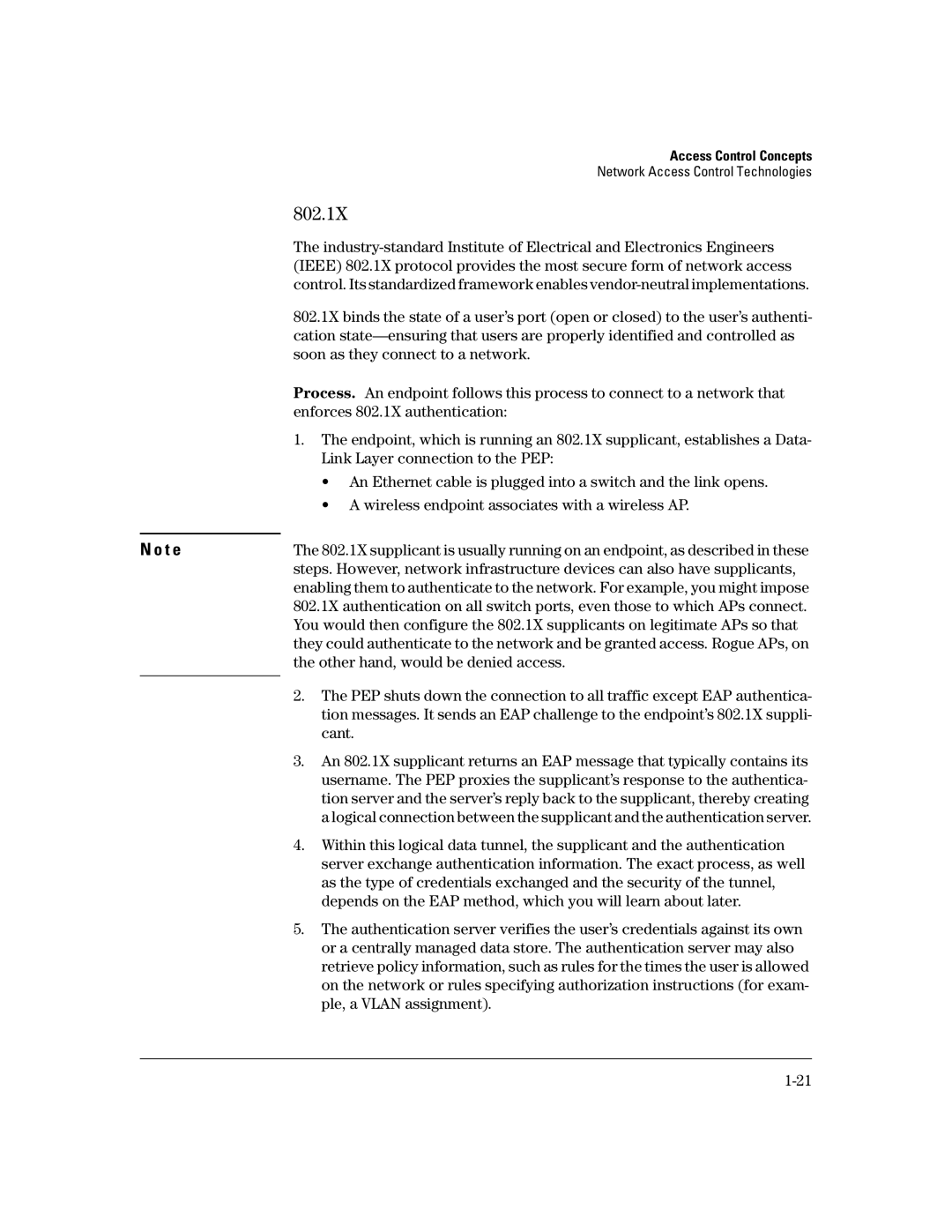
Access Control Concepts
Network Access Control Technologies
802.1X
The
802.1X binds the state of a user’s port (open or closed) to the user’s authenti- cation
Process. An endpoint follows this process to connect to a network that enforces 802.1X authentication:
1.The endpoint, which is running an 802.1X supplicant, establishes a Data- Link Layer connection to the PEP:
•An Ethernet cable is plugged into a switch and the link opens.
•A wireless endpoint associates with a wireless AP.
N o t e | The 802.1X supplicant is usually running on an endpoint, as described in these |
| steps. However, network infrastructure devices can also have supplicants, |
| enabling them to authenticate to the network. For example, you might impose |
| 802.1X authentication on all switch ports, even those to which APs connect. |
| You would then configure the 802.1X supplicants on legitimate APs so that |
| they could authenticate to the network and be granted access. Rogue APs, on |
| the other hand, would be denied access. |
| 2. The PEP shuts down the connection to all traffic except EAP authentica- |
| |
| tion messages. It sends an EAP challenge to the endpoint’s 802.1X suppli- |
| cant. |
| 3. An 802.1X supplicant returns an EAP message that typically contains its |
| username. The PEP proxies the supplicant’s response to the authentica- |
| tion server and the server’s reply back to the supplicant, thereby creating |
| a logical connection between the supplicant and the authentication server. |
| 4. Within this logical data tunnel, the supplicant and the authentication |
| server exchange authentication information. The exact process, as well |
| as the type of credentials exchanged and the security of the tunnel, |
| depends on the EAP method, which you will learn about later. |
| 5. The authentication server verifies the user’s credentials against its own |
| or a centrally managed data store. The authentication server may also |
| retrieve policy information, such as rules for the times the user is allowed |
| on the network or rules specifying authorization instructions (for exam- |
| ple, a VLAN assignment). |
